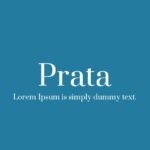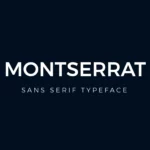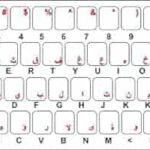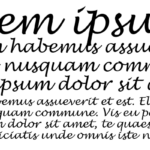The Gothic Castlevania Font
The Castlevania font was specifically created to reflect the battle between vampire hunters and Dracula. Its letters feature either an antler-shaped cross or Fraktur letterforms for added drama.
Ghoul Rabbit Sprites have received updated graphics, with wings that cover more area when breathing fire. Furthermore, Water Dragons now allow their flames to be directed slightly up or down for increased accuracy when emitting flames.
Gothic Style
The Castlevania series is an icon in video game history and pop culture alike, known for its dark themes and vampire-hunting stories as well as stylized visuals. Seen everywhere from comic books to movies and becoming cultural icons alike – its debut title released in 1986 was one of the most successful ever created!
Gothic art encompasses several areas of design. It can be found in architecture, literature, and music and became especially popular in Western Europe from the 12th to 16th century. Gothic features prominent arches with pointed arches, rib vaults, flying buttresses, large windows, and flying buttresses as defining features – most famously at Notre-Dame Cathedral in Paris.
The Castlevania series draws its inspiration from traditional horror fiction, including old horror films and novels, such as Charles Dickens’ works and those by the Bronte sisters as well as Bram Stoker’s novel Dracula. Furthermore, characters in the Castlevania series often wear gothic-style clothing as evidenced by the font used within games in this franchise.
Castlevania series font is a Gothic sans serif typeface with a high x-height and low contrast that recalls medieval blackletter. It is frequently used for horror movie posters or other projects with an ominous atmosphere.
Heavy Line Thickness
Castlevania font stands out from other fonts with its Gothic style and thick line thickness, giving it an immediate presence on screen. Furthermore, its detailed character boasts small flourishes and flourishes that set it apart. This font often finds use in graphic designs for video game fans wanting stylish t-shirts featuring its trademark Gothic font style.
Richter Belmont was the legendary vampire hunter who successfully put an end to Count Dracula’s menace, but four years later vanished mysteriously. Maria Renard began searching for him and was led to a castle where he appeared as a raven and began feeding on young maidens’ blood before she realized he had become a vampire and fled, only to be attacked by an identical fake zombie version of herself!
Adrian Fahrenheit Tepes, or Alucard, is one of the main characters from Konami’s Castlevania video game series. First introduced in 1989’s Castlevania III: Dracula’s Curse and later revised for 1997’s Symphony of the Night he is named for the 1943 film Son of Dracula; his name echoes this sentiment as Alucard rebelled against Count Vlad Dracula before suffering persecution for it. Additionally, his design draws upon Ayami Kojima who designed characters from Symphony of the Night as his character design was inspired by her original Japanese design in Symphony of the Night original Japanese version which featured different character designs than in Symphony of the Night Japanese original Japanese edition version;
Intricate Details
Castlevania font is an elegant typeface with intricate details and embellishments that distinguishes it from other fonts. Commonly found in video games to add a gothic aesthetic, Castlevania font can also be found elsewhere such as on t-shirts, and can often be described as decorative due to its many flourishes and exaggerated curves.
Castlevania uses Fette Fraktur, a blackletter-style typeface created and published by Walbaum in 1691. This font’s bold and dark appearance makes it perfect for its use in games of this series; letter shapes have been slightly modified to add stylization while each stroke’s top end is tilted at an angular pattern to mimic broad-nib pen strokes.
Players assume the role of Simon Belmont, an offspring of vampire hunters known as the Belmont family, to travel to Dracula’s castle and defeat him. Hearts collected throughout gameplay can power their subweapons – most are typically red but some come with blue tints that signify traditional Japanese beliefs that indicate spirits may be present.
Castlevania features classical music by Johann Sebastian Bach in its soundtrack, with harpists performing “Vampire Killer”. Additionally, this franchise has expanded into anime, manga, and action figures, but its primary focus remains games – which total over 30 titles!
Decorative
Castlevania font letters are more decorative than most others, featuring ornamental flourishes and exaggerated curves to make them the ideal choice for Gothic-themed logos. Additionally, their heavy line thickness makes them stand out more strongly against the competition – perfect for creating memorable and eye-catching logos that will stand out among competitors.
Castlevania font is easily identified by the letter C with its distinctive crescent moon shape on its left side and slightly elongated form with a steep letter slant – making it easy to recognize as part of this game series even for those unfamiliar with its games themselves.
Notable among the Castlevania font’s distinctive characteristics is its incorporation of calligraphic elements. This style of writing is commonly employed in formal documents and thus makes an appropriate choice for such an influential game series as Castlevania. Furthermore, this font also boasts decorative features like ornamental details and its slanted hexagon shape – all great characteristics to have when designing something with such historical value!
The Art of Castlevania is an indispensable read for fans of the game series. Quotes from artists and designers illuminate their vision for Castlevania; though unfortunately not as many of their concepts made their way over to MercurySteam’s Lords of Shadow series.







